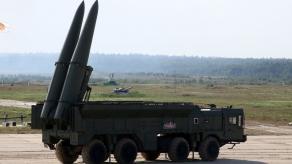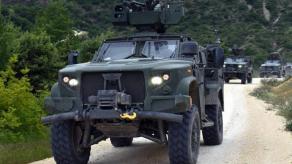In one of our publications, we mention that the Ukrainian Armed Forces used the American guided shell M712 Copperhead, originating from the 1970s, in the Kursk region. We also noted that the Lebanese government army used this type of munition in 2017 in battles against ISIS militants.
In this publication, we want to discuss more in-depth the use of the rare Copperhead by the Lebanese army and what practical lessons this story can offer for the Ukrainian practice. Especially since it is worth considering that the same M712 Copperhead may see wider use in Ukraine’s Defense Forces.

Here, we can rely on a relevant publication by The War Zone from June 30, 2019, which provides the following details.
To start, it should be noted that the use of M712 Copperhead by the Lebanese government forces in 2017 can only be judged based on indirect data.
The first mention of the use of such munitions from the United States by the Lebanese army came at the beginning of 2018, when the U.S. embassy in Lebanon announced the delivery of a defense assistance package to the country's armed forces. This package included 827 Copperhead guided shells, eight Bradley IFVs, and 200 Mk 19 automatic grenade launchers to replenish stocks depleted during battles against ISIS militants.
Video shows the preparation process for firing the M712 Copperhead in the US Army during the Cold War
At the same time, the declared cost of this aid package amounted to only 112 million dollars, of which the Copperhead shells accounted for just 1.4 million dollars, or 1,700 dollars per unit, which is paradoxically low, even with adjustments for residual value. Data shows that during the Cold War, the production cost of M712 guided shells was 70,000 dollars per unit.
It is also important to detail that the Lebanese army used its stock of M712 Copperhead during Operation Fajr al Jouroud, which lasted from August 19 to 31, 2017, during which several hundred of these munitions were fired. For firing, towed howitzers M114A1 and M198, as well as M109 self-propelled howitzers, which were in service with the Lebanese government army at that time, could have been used. We can see how the firing process using the M712 Copperhead looked in the video below:
At the same time, two important details remain unknown. The first is that two modes can be used for firing M712 Copperhead shells:
The first involves firing the shell in a normal ballistic trajectory toward the target. At approximately 3 kilometers from the point of impact, the round’s control fins pop out and maneuver it onto the target.
The gliding mode, used when it is not possible to fully utilize the laser beam for targeting (due to weather conditions, for example), where the shell essentially flies towards the target like a guided glide bomb.
The question remains open as to which of these two modes the Lebanese military predominantly used for firing at ISIS militants.
The second detail relates to the actual accuracy of firing. Based on officially stated data, the Lebanese military destroyed only 150 militants during their operation, while the average daily use of M712 Copperhead was at least 67 units, indicating clear issues with the effective use of such munitions during combat.
Nevertheless, the above material leads to the following conclusions that may be relevant for Ukraine at this moment. A certain small number of M712 Copperhead guided shells may still be available to the U.S., and these munitions could be recorded at a paradoxically low residual value.
Additionally, practice shows that M712 Copperhead is sufficiently adaptable for use under any conditions.
Read more: Canadian Instructor Fights as Tank Gunner in Ukraine













